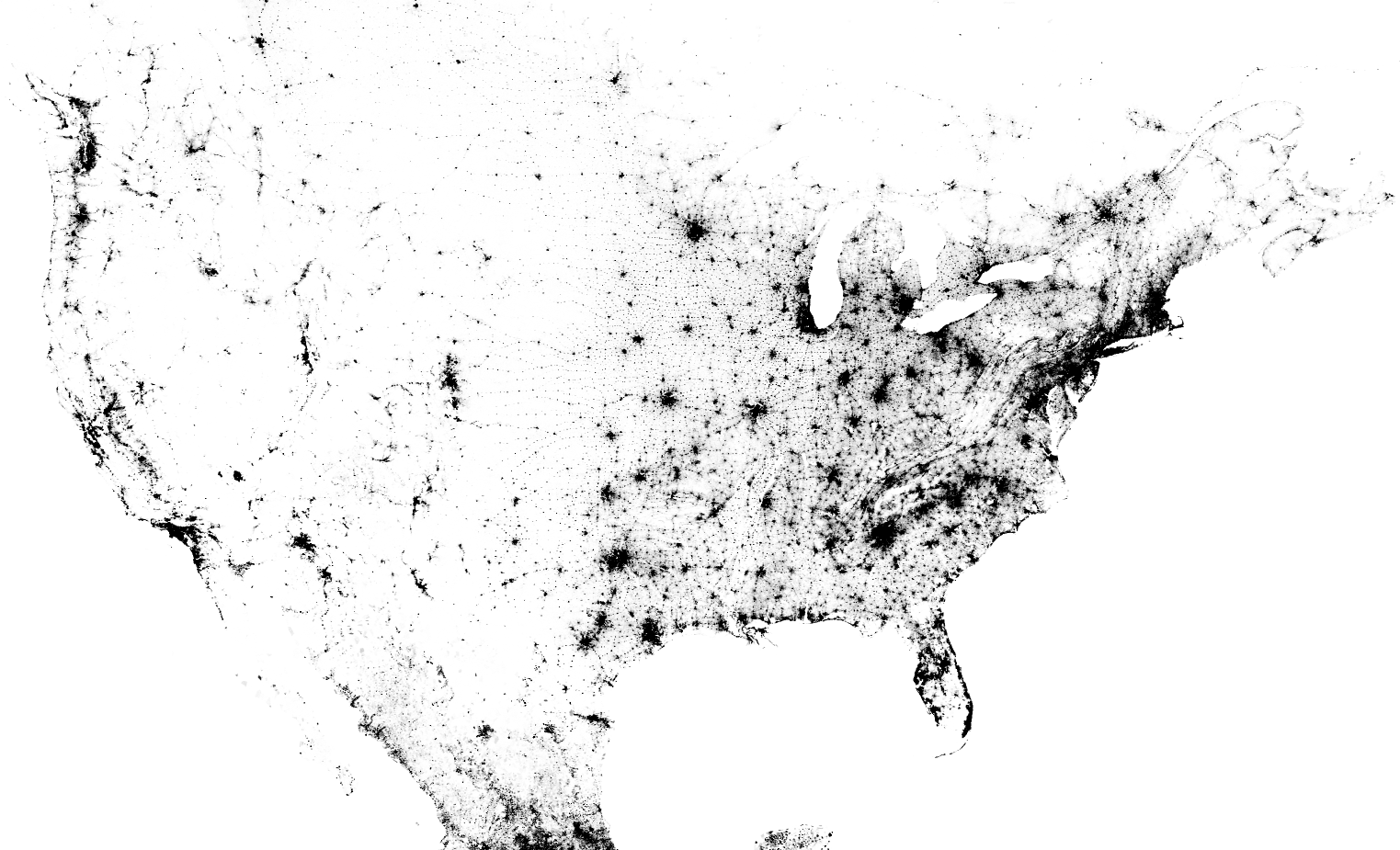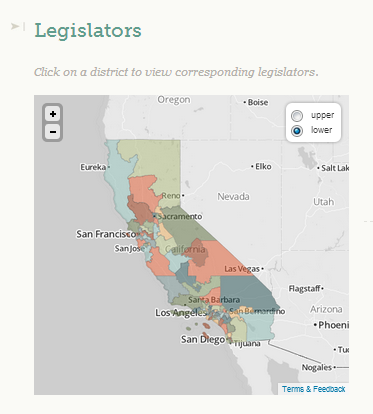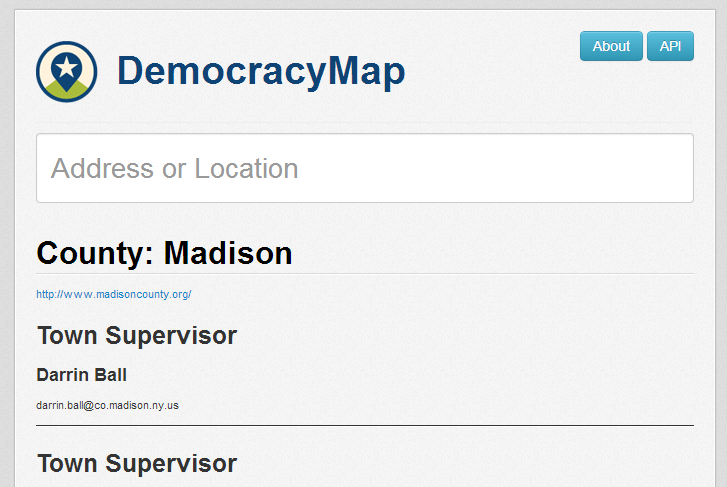Many open data initiatives forget to include the basic facts about the government itself
In the past few years we’ve seen a huge shift in the way governments publish information. More and more governments are proactively releasing information as raw open data rather than simply putting out reports or responding to requests for information. This has enabled all sorts of great tools like the ones that help us find transportation or the ones that let us track the spending and performance of our government. Unfortunately, somewhere in this new wave of open data we forgot some of the most fundamental information about our government, the basic “who”, “what”, “when”, and “where”.

Do you know all the different government bodies and districts that you’re a part of? Do you know who all your elected officials are? Do you know where and when to vote or when the next public meeting is? Now perhaps you’re thinking that this information is easy enough to find, so what does this have to do with open data? It’s true, it might not be too hard to learn about the highest office or who runs your city, but it usually doesn’t take long before you get lost down the rabbit hole. Government is complex, particularly in America where there can be a vast multitude of government districts and offices at the local level.
It’s difficult enough to come by comprehensive information about local government, so there definitely aren’t many surveys that help convey this problem, but you can start to get the idea from a pretty high level. Studies have shown that only about two thirds of Americans can name their governor (Pew 2007) while less than half can name even one of their senators (Social Capital Community Survey 2006). This excerpt from Andrew Romano in Newsweek captures the problem well:
Most experts agree that the relative complexity of the U.S. political system makes it hard for Americans to keep up. In many European countries, parliaments have proportional representation, and the majority party rules without having to “share power with a lot of subnational governments,” notes Yale political scientist Jacob Hacker, coauthor of Winner-Take-All Politics. In contrast, we’re saddled with a nonproportional Senate; a tangle of state, local, and federal bureaucracies; and near-constant elections for every imaginable office (judge, sheriff, school-board member, and so on). “Nobody is competent to understand it all, which you realize every time you vote,” says Michael Schudson, author of The Good Citizen. “You know you’re going to come up short, and that discourages you from learning more.”
<img src=”http://upload.wikimedia.org/wikipedia/commons/thumb/0/0f/Buffalo_City_Hall%2C_Interior%2C_thirteenth_floor%2C_council_chamber.jpg/759px-Buffalo_City_Hall%2C_Interior%2C_thirteenth_floor%2C_council_chamber.jpg” width=”304 height=”240″ align=”left” />
How can we have a functioning democracy when we don’t even know the local government we belong to or who our democratically elected representatives are? It’s not that Americans are simply too ignorant or apathetic to know this information, it’s that the system of government really is complex. With what often seems like chaos on the national stage it can be easy to think of local government as simple, yet that’s rarely the case. There are about 35,000 municipal governments in the US, but when you count all the other local districts there are nearly 90,000 government bodies (US Census 2012) with a total of more than 500,000 elected officials (US Census 1992). The average American might struggle to name their representatives in Washington D.C., but that’s just the tip of the iceberg. They can easily belong to 15 government districts with more than 50 elected officials representing them.
We overlook the fact that it’s genuinely difficult to find information about all our levels of government. We unconsciously assume that this information is published on some government website well enough that we don’t need to include it as part of any kind of open data program. Even the cities that have been very progressive with open data like Washington DC and New York neglect to publish basic information like the names and contact details of their city councilmembers as raw open data. The NYC Green Book was finally posted online last year, but it’s still not available as raw data. Even in the broader open data and open government community, this information doesn’t get much attention. The basic contact details for government offices and elected officials were not part of the Open Data Census and neither were jurisdiction boundaries for government districts.

Fortunately, a number of projects have started working to address this discrepancy. In the UK, there’s already been great progress with websites like OpenlyLocal, TheyWorkForYou and MapIt, but similar efforts in North America are much more nascent. OpenNorth Represent has quickly become the most comprehensive database of Canadian elected officials with data that covers about half the population and boundary data that covers nearly two thirds. In the US, the OpenStates project has made huge progress in providing comprehensive coverage of the roughly 7,500 state legislators across the country while the Voting Information Project has started to provide comprehensive open data on where to vote and what’s on the ballot – some of the most essential yet most elusive data in our democracy. Most recently, DemocracyMap has been digging in at the local level, building off the data from the OpenStates API and the Sunlight Congress API and deploying an arsenal of web scrapers to provide the most comprehensive open dataset of elected officials and government boundaries in the US. The DemocracyMap API currently includes over 100,000 local officials, but it still needs a lot more data for complete coverage. In order to scale, many of these projects have taken an open source community-driven approach where volunteers are able to contribute scrapers to unlock more data, but many of us have also come to realize that we need data standards so we can work together better and so our governments can publish data the right way from the start.

James McKinney from OpenNorth has already put a lot of work into the Popolo Project, an initial draft of data standards to cover some of the most basic information about government like people and their offices. More recently James also started a W3C Open Government Community Group to help develop these standards with others working in this field. In the coming months I hope to see a greater convergence of these efforts so we can agree on basic standards and begin to establish a common infrastructure for defining and discovering who and what our government is. Imagine an atlas for navigating the political geography of the world from the international offices to those in the smallest neighborhood councils.
This is a problem that is so basic that most people are shocked when they realize it hasn’t been solved yet. It’s one of the most myopic aspects of the open government movement. Fortunately we are now making significant progress, but we need all the support we can get: scraping more data, establishing standards, and convincing folks like the Secretaries of State in many US States that we need to publish all boundaries and basic government contact information as open data. If you’re starting a new open data program, please don’t forget about the basics!
DemocracyMap is a submission for the Knight News Challenge. You can read the full proposal and provide feedback on the Knight News Challenge page.
Phil helps create digital civic infrastructure for open cities and open government. He's spearheaded community-driven civic technology initiatives with global reach like the Open311 standard for interacting with cities. Most recently he served as a Presidential Innovation Fellow working with the GSA and the White House Office of Digital Strategy on Project MyUSA.









I hear you loud and clear on this as a huge failing- but I’m not sure it’s a failing of open data so much as a failure of there being anyone even remotely responsible for such a thing in our governments- Feds are resp for federal info, state for state, local for whatever- there is no mandate for this content or data to be connected and no accepted format for publishing such info that is accessible to gov widely to even start to do this. Which is why I dig Democracy Map!
With those standards you mentioned above we will finally have a way to help/encourage/require all local level representation to be represented digitally, which will help with making our stovepiped system more visible and accessible. But again there, is it really a failure of open data, as if “open data” is a thing or has agency itself? It’s really a failing of us all for not having a system or a mandate or a desire to do this better. Open data is just a smart way to enable this.
My $0.02. ;-)